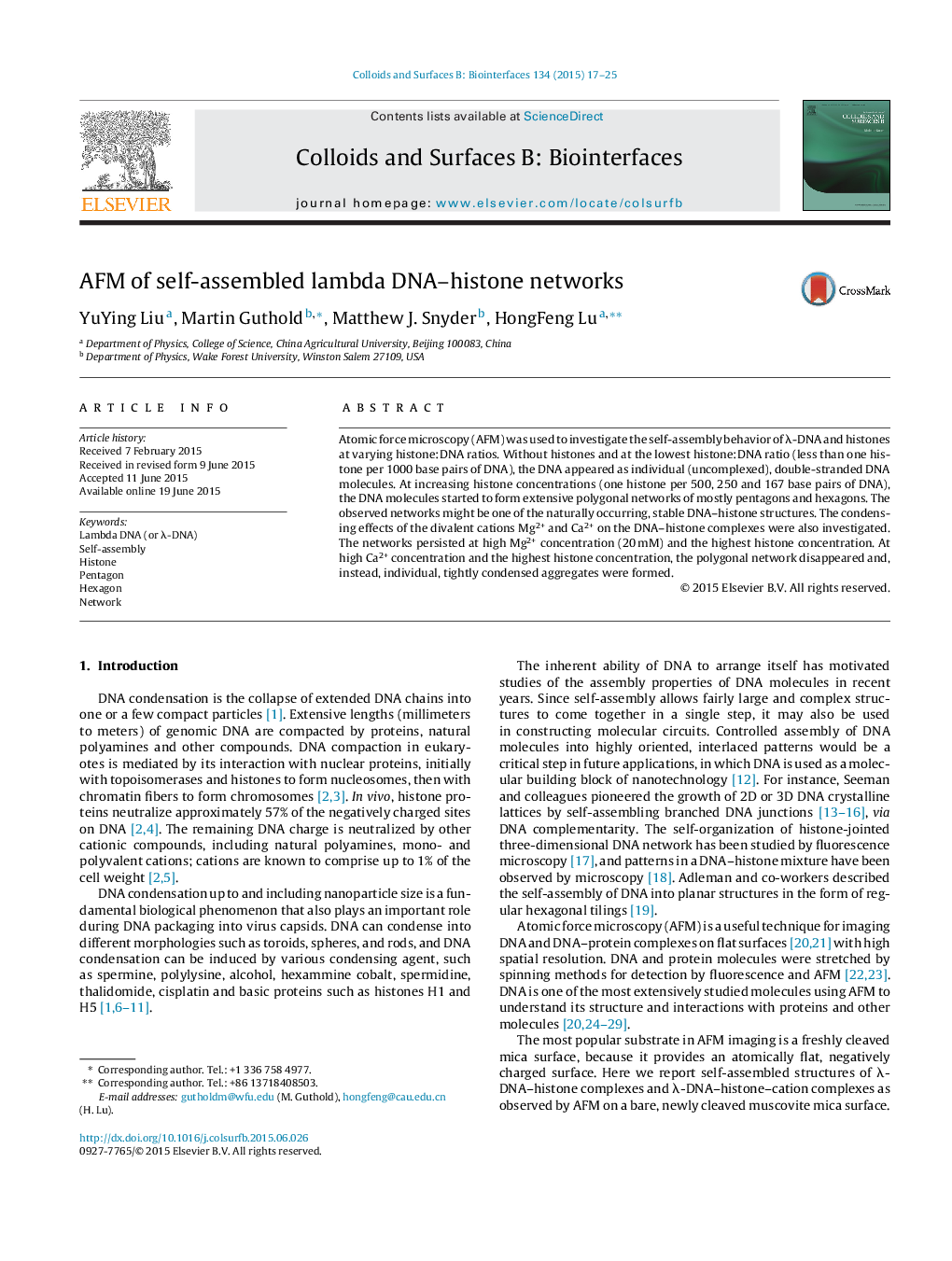| کد مقاله | کد نشریه | سال انتشار | مقاله انگلیسی | نسخه تمام متن |
|---|---|---|---|---|
| 599355 | 1454270 | 2015 | 9 صفحه PDF | دانلود رایگان |

• The self-assembly behavior of λ-DNA and histones was studied by AFM on a mica surface.
• λ-DNA–histone complexes can self-assemble into networks with pentagon or hexagon structures.
• The λ-DNA–histone network structure is sensitive to the histone:DNA ratio.
• The condensing effects of Mg2+, Ca2+ on DNA–histone complexes were also investigated.
Atomic force microscopy (AFM) was used to investigate the self-assembly behavior of λ-DNA and histones at varying histone:DNA ratios. Without histones and at the lowest histone:DNA ratio (less than one histone per 1000 base pairs of DNA), the DNA appeared as individual (uncomplexed), double-stranded DNA molecules. At increasing histone concentrations (one histone per 500, 250 and 167 base pairs of DNA), the DNA molecules started to form extensive polygonal networks of mostly pentagons and hexagons. The observed networks might be one of the naturally occurring, stable DNA–histone structures. The condensing effects of the divalent cations Mg2+ and Ca2+ on the DNA–histone complexes were also investigated. The networks persisted at high Mg2+ concentration (20 mM) and the highest histone concentration. At high Ca2+ concentration and the highest histone concentration, the polygonal network disappeared and, instead, individual, tightly condensed aggregates were formed.
Figure optionsDownload as PowerPoint slide
Journal: Colloids and Surfaces B: Biointerfaces - Volume 134, 1 October 2015, Pages 17–25